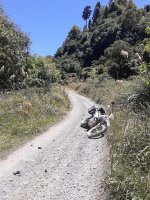Woodenfish
Active member
Yes! Which is exactly the point being made regarding unnecessary failure points. If you've worked in the auto or electronics field, you understand why so many choose not to mess with known weak spots.
I’m a retired professional auto technician with decades of experience but I don’t take that as knowledge on Can Am motorcycles. I have read many schematics and am an expert in electronics only on the line of vehicles I serviced at new car dealerships throughout my career at both foreign and domestic. If I were to see a schematic drawing I might have a differing opinion. Knowing that I don’t I made certain assumptions.
I assume the wiring to the kill switch and ignition switch are all thin gauge low current carriers. When I hit the kill switch the engine ignition system circuit is broken. When I turn the ignition key switch a lot more current drawing devices is interrupted. My next assumption is that the ignition is on one relay while the other circuits I shut down with the key switch have their individual relays.
My final assumption is that I ease the current draw interruption by hitting the kill switch first breaking a load and then use the key switch to finish the shutdown process. Therefore I don’t understand how hitting the kill switch is going to increase wear on a low current switch. If there was a prior failure rate with the kill switch at one point I am at the mercy of the BRP engineers to remedy the problem. At the end of the day you it’s a personal choice where in an ideal world makes no difference. I guess I just like to make the job of stealing the motorcycle a little more different. Haha!



